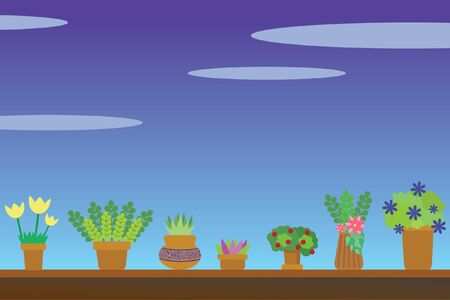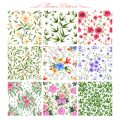Introduction to the Cottage Garden Tradition
The British cottage garden is a cherished hallmark of rural life, celebrated for its enchanting blend of informality, abundant colour, and practical productivity. Rooted in centuries-old tradition, this style emerged from humble beginnings—where villagers maximised small plots to grow food, herbs, and flowers side by side. Over time, the cottage garden evolved into an enduring symbol of English charm, defined by exuberant plantings, winding paths, and a delightful lack of rigid structure. Today, the appeal of the cottage garden endures, captivating those who yearn for a harmonious interplay of beauty and utility. Its relaxed composition offers a sanctuary where nature flourishes freely, yet with intentionality—a living tapestry that continues to inspire gardeners across Britain and beyond.
2. The Modern Appeal of Raised Planters
In recent years, raised planters have experienced a notable resurgence in British gardens, marking a shift towards both functionality and style within contemporary outdoor spaces. Their increasing popularity can be attributed to a blend of practical benefits and aesthetic flexibility, making them an ideal choice for gardeners seeking to revive the classic cottage garden look while embracing modern living.
One of the primary reasons for the widespread adoption of raised planters is their practicality. Elevated beds offer improved drainage and soil quality control, which is particularly advantageous in regions with heavy clay or compacted soils commonly found across the UK. Furthermore, raised planters reduce the need for bending and kneeling, significantly enhancing accessibility for older gardeners or those with limited mobility. This feature supports a more inclusive gardening experience, encouraging people of all ages and abilities to engage in horticultural activities.
The design versatility of raised planters is another compelling factor driving their popularity. They are available in a wide range of materials—such as timber, brick, stone, and even recycled composites—allowing homeowners to select styles that harmonise with both traditional cottage aesthetics and contemporary urban settings. Whether arranged in geometric grids or informal clusters, raised planters can define pathways, frame seating areas, or create focal points within the garden.
Key Advantages of Raised Planters in Contemporary British Gardens
| Advantage | Description |
|---|---|
| Improved Soil Management | Allows for customised soil mixes and better drainage, ideal for diverse plant types. |
| Enhanced Accessibility | Makes gardening easier for individuals with physical limitations or limited space. |
| Pest Control | Helps deter common ground-level pests such as slugs and snails. |
| Design Flexibility | Fits various garden sizes and styles; suitable for both rural cottages and urban courtyards. |
| Extended Growing Season | Soil warms up more quickly in spring, allowing earlier planting. |
This combination of practicality and creative potential ensures that raised planters are not just a fleeting trend but a sustainable solution for modern British gardeners who wish to blend tradition with innovation in their outdoor sanctuaries.

3. Blending Heritage with Modern Solutions
The quintessential English cottage garden is renowned for its informal beauty, dense plantings, and harmonious blend of colour and texture. However, integrating modern raised planters into this traditional landscape requires careful consideration to ensure that the garden’s historic charm is preserved. The key lies in selecting materials and designs that echo the rustic character of a classic cottage plot while offering the practical benefits of contemporary gardening.
Respecting Traditional Aesthetics
Raised planters crafted from natural materials such as timber or weathered stone blend effortlessly with the organic feel of an English cottage garden. Opting for finishes that develop a gentle patina over time allows these planters to settle into their surroundings, rather than appearing incongruous or overly modern. Thoughtful placement—perhaps bordering winding gravel paths or nestled amidst established herbaceous borders—helps to reinforce the sense of informality that defines the cottage style.
Functional Elegance
While raised planters offer significant advantages in terms of accessibility and soil quality, their design should be sympathetic to the garden’s heritage. Low-profile beds edged with traditional brickwork or willow hurdles are both practical and visually coherent with period properties. Modular arrangements can mimic the patchwork effect typical of cottage plots, while providing structure and organisation without sacrificing the abundant, slightly wild look beloved by many British gardeners.
Unifying Old and New Elements
To ensure seamless integration, consider planting schemes that mirror those found in historic cottage gardens: drifts of foxgloves, delphiniums, lavender, and roses interspersed with culinary herbs and seasonal vegetables. By using raised planters as subtle frameworks rather than dominant features, you can introduce modern convenience without undermining the timeless appeal of your outdoor space.
Conclusion
With thoughtful design choices and sensitive planting, raised planters can become an asset to any cottage garden—enhancing both its practicality and its enduring English character.
4. Plant Selection for Raised Planters
Choosing the right plants is fundamental to reviving the quintessential cottage garden with a contemporary twist using raised planters. The UK’s variable climate requires careful selection of species that will not only flourish in elevated beds but also maintain that charming, informal cottage aesthetic. Below, we present recommendations for both traditional and modern plant varieties that are well-suited to British gardens, offering year-round interest and easy maintenance.
Traditional Cottage Garden Favourites
Classic cottage gardens are renowned for their abundance and diversity. Many time-honoured plants adapt beautifully to raised beds, benefiting from improved drainage and soil control. Here’s a list of traditional choices:
| Plant Name | Seasonal Interest | Key Features |
|---|---|---|
| Lavandula angustifolia (English Lavender) | Summer | Scented foliage, pollinator-friendly |
| Alchemilla mollis (Lady’s Mantle) | Spring-Summer | Tolerant, frothy lime-green blooms |
| Geranium ‘Rozanne’ (Cranesbill) | Late Spring-Autumn | Long-flowering, low-maintenance |
| Digitalis purpurea (Foxglove) | Early Summer | Tall spires, attracts bees |
| Aquilegia vulgaris (Columbine) | Late Spring-Early Summer | Nostalgic flowers, shade-tolerant |
Modern Additions for Structure and Colour
To complement traditional selections and give your raised planters a contemporary edge, consider integrating modern cultivars known for their resilience and visual impact. These plants offer architectural interest or prolonged flowering periods:
| Plant Name | Seasonal Interest | Key Features |
|---|---|---|
| Erysimum ‘Bowles’s Mauve’ (Wallflower) | Year-Round | Evergreen, continuous blooms |
| Pennisetum alopecuroides (Fountain Grass) | Summer-Autumn | Soft texture, movement in wind |
| Sedum ‘Autumn Joy’ (Stonecrop) | Late Summer-Autumn | Drought-tolerant, pollinator magnet |
| Heuchera ‘Obsidian’ (Coral Bells) | Year-Round Foliage | Dramatic leaves, shade-loving |
Sustainable Choices for the UK Climate
The success of your raised planters lies not just in aesthetics but also in sustainability. Opt for hardy perennials and robust annuals that can withstand the UK’s rainfall and temperature fluctuations. Plants such as Salvia nemorosa, Nepeta (Catmint), and Achillea millefolium (Yarrow) thrive with minimal intervention while supporting local wildlife.
Cottage Style Tips for Planting Raised Beds
Create layers by combining taller species like foxgloves at the back with cascading varieties such as trailing lobelia at the edges. Interplant edible herbs—chives, thyme, and parsley—for a practical yet decorative effect. Ultimately, mixing old favourites with new introductions in your raised planters is the surest way to revive the timeless charm of a British cottage garden while embracing modern gardening convenience.
5. Layout and Planning Tips
Designing a cottage garden with modern raised planters requires a thoughtful approach to achieve the signature informality and layered look that defines this classic British style. The goal is to blend structure and spontaneity, allowing each element to shine while fostering a harmonious whole.
Embrace Informal Structure
Begin by resisting the urge for rigid symmetry. Instead, stagger your raised planters in gentle curves or offset arrangements. This echoes the meandering paths and natural flow found in traditional cottage gardens. Consider placing taller planters at the back or towards the centre, tapering down to smaller ones along the edges, encouraging a sense of depth and visual intrigue.
Layering for Depth and Interest
To recreate the lushness of a true cottage garden, focus on layering. Position taller flowering plants or small shrubs in the rear planters, while reserving mid-height perennials and annuals for central planters. Use trailing varieties or ground cover plants in front-facing or lower beds to cascade over the planter edges, softening lines and creating a seamless transition between levels.
Create Pathways and Nooks
Incorporate winding paths between clusters of raised planters using gravel, reclaimed brick, or stepping stones—materials evocative of British gardens. These pathways not only provide practical access but also invite exploration, revealing new perspectives with each turn. Consider adding benches or seating alcoves nestled among the planters for moments of quiet enjoyment.
Mix Plant Varieties Thoughtfully
A successful cottage garden relies on diversity. Blend classic favourites such as foxgloves, lavender, delphiniums, and roses with culinary herbs and ornamental grasses. Interplant edibles like strawberries or chard in sunny spots for both beauty and utility. Arrange plantings so that colours, textures, and heights intermingle naturally, avoiding strict rows.
Plan for Seasonal Interest
Select plant combinations that ensure year-round appeal—spring bulbs beneath summer blooms, autumn foliage among evergreens. Adjust your layout to highlight seasonal transitions; for example, position spring-flowering bulbs where they’ll be visible from windows or garden paths.
By combining these layout and planning principles, you’ll capture the timeless charm of a British cottage garden while enjoying the convenience and structure offered by modern raised planters.
6. Sustainable Practices and Wildlife Support
Modern raised planters are not only a practical feature in reviving the classic cottage garden, but they also champion sustainability and foster a wildlife-friendly environment—a core value in British gardening culture. By elevating the growing space, these planters allow for efficient use of organic compost and peat-free soil blends, reducing reliance on chemical fertilisers and promoting healthier plant growth. This aligns with the UK’s ongoing efforts to encourage sustainable horticulture and protect native ecosystems.
Resource Efficiency and Soil Health
Raised planters enable gardeners to manage water usage more effectively, minimising waste through targeted irrigation and better drainage. The controlled environment also helps prevent soil compaction, allowing beneficial microorganisms to thrive. By incorporating rainwater harvesting systems or using recycled materials for construction, gardeners further reduce their environmental footprint—an approach celebrated within British allotment and gardening societies.
Supporting Local Wildlife
The traditional cottage garden is renowned for its informal beauty and biodiversity. Raised planters can be designed to include pollinator-friendly plants such as lavender, foxgloves, or native wildflowers, providing vital nectar sources for bees, butterflies, and other insects. Integrating log piles or small water features nearby creates habitats for amphibians and hedgehogs, contributing to the garden’s role as a haven for local fauna.
Aligning with British Gardening Ethos
British gardeners have long embraced practices that nurture both plant life and wildlife. Raised planters reinforce this ethos by making it easier to rotate crops, companion plant, and experiment with organic pest control—all methods that limit environmental impact while enhancing biodiversity. In essence, these modern structures breathe new life into the cottage garden tradition, ensuring it remains sustainable and vibrant for generations to come.
7. Conclusion: Bringing the Past into the Present
The cottage garden has long held a special place in British horticultural heritage, symbolising both rustic charm and practical abundance. Its informal planting schemes, abundant florals, and productive kitchen borders have inspired generations of gardeners across the UK. Today, as lifestyles and garden spaces evolve, modern approaches like raised planters are breathing new life into this cherished tradition. By integrating contemporary solutions with time-honoured aesthetics, gardeners are able to enjoy the beauty, biodiversity, and productivity of cottage gardens in even the smallest urban plots or challenging soils. Raised planters not only address accessibility and maintenance concerns but also allow for creative layouts that echo the enchanting disorder of classic cottage design. Ultimately, the fusion of old-world romance with modern ingenuity ensures that the spirit of the cottage garden endures—adaptable, relevant, and thriving in today’s British homes and communities.


